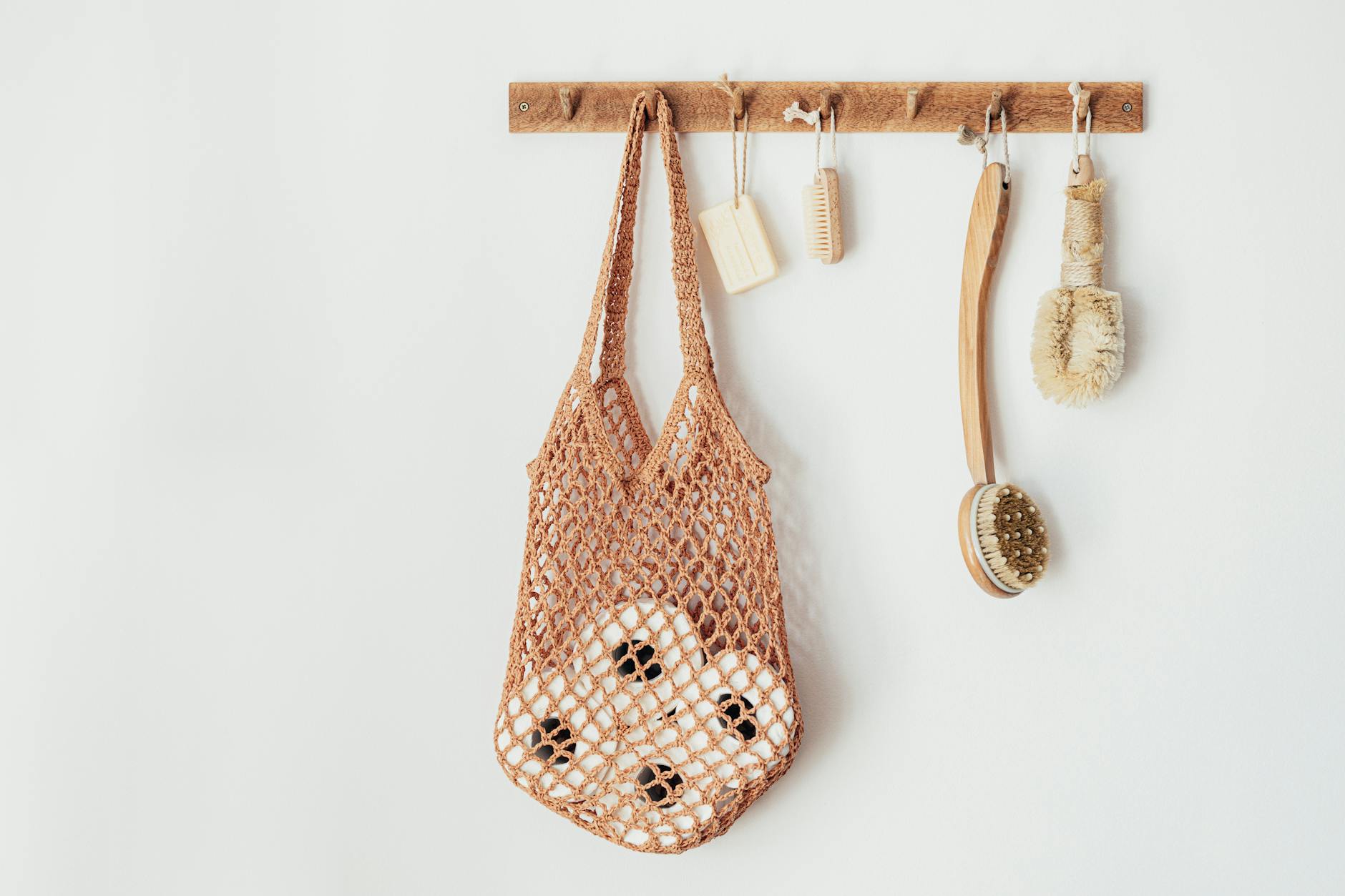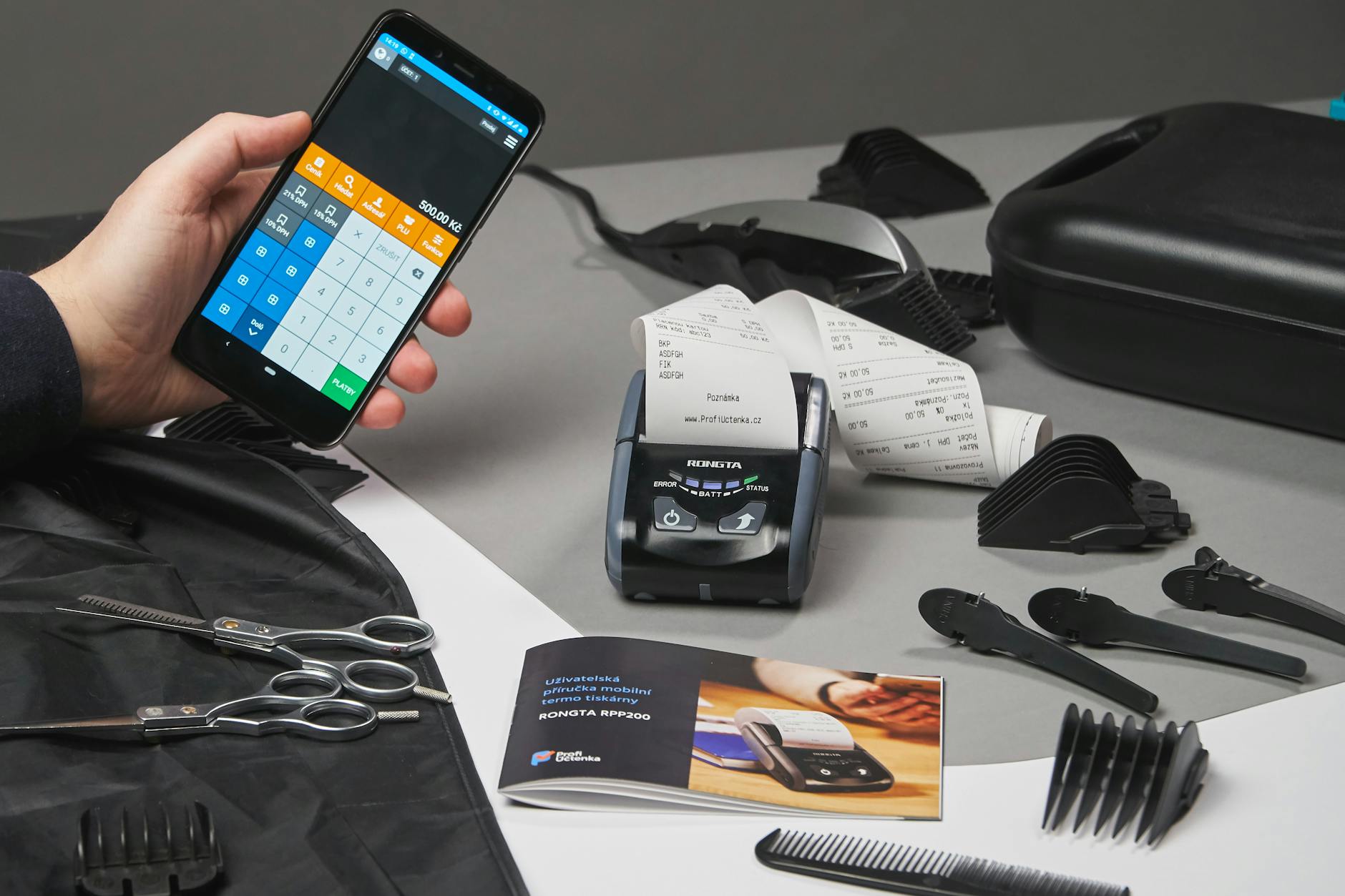📌 TL;DR — Frugal Living in 60 Seconds
A fast summary of the smartest frugal habits.
• Frugal people save money through intentional daily habits.
• Small decisions compound into major long-term savings.
• Compare prices online before buying.
• Use coupon codes and cashback tools effectively.
• Avoid impulse purchases by pausing before checkout.
• Wait for sales, clearance events, and seasonal discounts.
• Buy off-season to save the most.
• Track price drops and shop strategically.
• Use store rewards, points, and member discounts.
• Combine offers to multiply savings.
• Sign up for free loyalty programs everywhere you shop.
• Thrift stores offer huge discounts and unique finds.
• Inspect items and visit often for the best deals.
• Reuse → reduce waste → save money.
• Plan routes and shop early for the best selection.
• Negotiate respectfully — most sellers expect it.
• Look for hidden gems and undervalued items.
• Call providers and ask for promotions or loyalty discounts.
• Compare prices to use as leverage.
• Bundle services or switch providers to save hundreds yearly.
• Frugal living = intentional choices, smart shopping, and mindful spending.
• Combine rewards, coupons, timing, and negotiation.
• Small habits → big savings → long-term financial freedom.
Frugality is a lifestyle choice that can lead to significant savings and financial freedom. In today’s fast-paced, consumer-driven society, adopting the habits of highly frugal people can be a game-changer for many. In this blog post, we will explore the 7 habits of highly frugal people and how they save money every day. By following their footsteps, you’ll be well on your way to a more financially secure and fulfilling life. So, are you ready to embrace these money-saving strategies? Let’s dive in!
What is Frugality?
Frugality is the practice of being economical with money or resources. It is the art of saving money by making deliberate and informed decisions about how we spend our money. Frugal people are not necessarily cheap, but they are careful with how they use their resources and try to avoid wasteful spending.
The Benefits of Being Frugal
Being frugal has many benefits. It can help you save money, reduce debt, and live a simpler, less cluttered life. Frugal living can also reduce stress and anxiety, as you are less worried about money and more focused on the things that matter most to you.
Frugality also encourages creativity and resourcefulness. When you have to make do with less, you become more innovative in finding ways to accomplish your goals. This can lead to a sense of pride and accomplishment, as you learn to live more independently and self-sufficiently.
The Difference Between Frugality and Cheapness
Frugality is often confused with cheapness, but they are not the same thing. Cheapness is the practice of trying to spend as little money as possible, regardless of the consequences. Cheap people try to save money at all costs, even if it means sacrificing quality, safety, or comfort.
Frugal people, on the other hand, are willing to spend money when it makes sense to do so. They understand that sometimes you have to pay more upfront to save money in the long run. For example, a frugal person might invest in a high-quality pair of shoes that will last for years, rather than buying cheap shoes that will fall apart after a few months.
The Principles of Frugality
Frugality is not just about saving money, it is also about living a more intentional and fulfilling life. Here are some principles of frugality:
- Live within your means
- Be mindful of your spending
- Avoid debt
- Invest in quality
- Use resources wisely
- Be self-sufficient
- Appreciate what you have
By following these principles, you can learn to live a more frugal and fulfilling life. You will be able to save money, reduce stress, and focus on the things that matter most to you.

When it comes to saving money, there are two approaches: frugality and cheapness. While they may seem similar, they are actually quite different. Let’s dive into the distinction between the two.
Frugality: A Mindset of Resourcefulness
Frugality is about being resourceful with your money. It means making intentional choices to stretch your dollars as far as they can go, without sacrificing quality of life. Frugal people are mindful of their spending, always on the lookout for ways to save money without compromising on what’s important to them. They are willing to invest time and effort to find the best deals, and they prioritize spending on what truly matters.
Frugality is a mindset that goes beyond just saving money. It’s about being mindful of your consumption, reducing waste, and living sustainably. Frugal people are often creative and resourceful, finding new ways to repurpose items, reduce energy consumption, and live a more minimalist lifestyle. They see frugality as a means to live a more intentional, fulfilling life.
Cheapness: A Mindset of Scarcity
Cheapness, on the other hand, is a mindset of scarcity. It’s about cutting corners and pinching pennies at all costs, even if it means sacrificing quality or convenience. Cheap people are often stingy with their money, unwilling to invest in anything that doesn’t have an immediate, tangible benefit. They are more concerned with the price tag than the value of what they’re buying.
Cheapness can be harmful, both to your financial well-being and your quality of life. It can lead to missed opportunities, lower quality products, and a lack of enjoyment in the things you buy. Cheap people often experience stress and anxiety around money, constantly worrying about whether they’re getting the best deal.
The Bottom Line
While both frugality and cheapness are about saving money, they have vastly different mindsets and approaches. Frugality is about being resourceful and mindful, while cheapness is about scarcity and cutting corners. To cultivate a frugal mindset, focus on your values and priorities, and be intentional with your spending. Don’t be afraid to invest in quality products and experiences that bring you joy and fulfillment. Remember, frugality is about living a more intentional, fulfilling life.

Meal planning is one of the most effective ways to save money on groceries. It allows you to budget your meals for the week and buy only what you need, preventing overspending and unnecessary trips to the grocery store. Here are some tips on how highly frugal people meal plan to save money every day.
Take Inventory of Your Kitchen
Before you start meal planning, take inventory of what you already have in your kitchen. This includes ingredients, spices, and pantry staples. This helps you to avoid buying items you already have and also provides inspiration for meals based on what you already have on hand.

Plan Your Meals Around Sale Items
Highly frugal people plan their meals around sale items to save money. Check your local grocery store’s weekly ad and plan your meals around the items that are on sale. This allows you to save money on groceries while still creating delicious and healthy meals for your family.
Avoid Eating Out
Another way highly frugal people save money on meals is by avoiding eating out. Eating out can be expensive, and it’s often cheaper to cook meals at home. Instead, try to recreate your favorite restaurant meals at home or make a meal plan that includes meals you look forward to eating.
Prep Meals in Advance
Prepping your meals in advance can also save you time and money. Take some time to prep and cook your meals in advance for the week. This not only saves you time during the week but also helps you to avoid the temptation of eating out when you’re tired or don’t have time to cook.

Stick to Your Meal Plan and Grocery List
Finally, highly frugal people stick to their meal plan and grocery list to save money. They avoid the temptation of impulse buying and stick to the items on their list. This helps to prevent overspending and ensures that they’re only buying what they need for the week.
By following these meal planning tips, you can save money on groceries and eat healthy and delicious meals every day. Give it a try and see how much you can save!
Shopping List: The Key to Frugal Grocery Shopping

When it comes to grocery shopping, having a shopping list is crucial. Not only does it help you stay organized, but it can also save you money in the long run. Highly frugal people are known for being diligent about their shopping lists, and here’s how you can adopt their habits:
1. Plan Ahead
Before heading to the grocery store, take some time to plan out your meals for the week. This will not only help you create an accurate shopping list, but it will also prevent you from buying unnecessary items. When planning your meals, consider using ingredients that are on sale or in season to save even more money.
2. Stick to Your List
Once you have your shopping list, it’s important to stick to it as much as possible. Avoid impulse purchases and stick to the items on your list. Highly frugal people often leave their credit cards at home and only bring cash to prevent overspending.
3. Shop Around
Don’t be afraid to shop around for the best deals. Check out multiple grocery stores in your area and compare prices. You can also use apps like Flipp or Ibotta to find coupons and cashback offers. Highly frugal people are always on the lookout for ways to save money, and shopping around is a great way to do it.
4. Buy in Bulk
Buying in bulk can often save you money in the long run. Consider purchasing non-perishable items like rice, beans, and pasta in bulk to save money and reduce waste. Just be sure to only buy what you know you’ll use.
5. Don’t Shop When You’re Hungry
Shopping on an empty stomach can lead to impulse purchases and overspending. Highly frugal people know to eat a snack before heading to the grocery store to prevent this from happening.

6. Check Expiration Dates
Before purchasing any item, be sure to check the expiration date. Highly frugal people know that buying expired items can end up costing you more in the long run if you have to throw them away.
7. Consider Store Brand Items
Store brand items are often just as good as name brand items, but they’re significantly cheaper. Highly frugal people aren’t afraid to try store brand items and can save a lot of money by doing so.
By adopting these shopping list habits, you can become a highly frugal grocery shopper and save money every day.
Budgeting: How To Save Money Like A Pro

As a highly frugal person, one of the most important habits you can develop is budgeting. Budgeting allows you to keep track of your money and ensure that you are spending it wisely. It may seem like a daunting task, but with a few simple steps, you can create a budget that works for you.
Step 1: Determine Your Monthly Income

The first step in creating a budget is to determine how much money you have coming in each month. This includes your regular paycheck, any side hustles or freelance work, and any other sources of income. Once you have a clear understanding of your monthly income, you can move on to the next step.
Step 2: Track Your Expenses

The next step is to track your expenses. This includes everything from your rent or mortgage payment to your daily cup of coffee. Be sure to include both fixed expenses (like rent) and variable expenses (like groceries). Tracking your expenses will give you a clear picture of where your money is going and will help you identify areas where you can cut back.
Step 3: Create a Budget

Once you have a clear understanding of your monthly income and expenses, it’s time to create a budget. Start by listing all of your monthly expenses and subtracting them from your monthly income. The remaining amount is your disposable income, which you can use to pay off debt or save for the future. Be sure to allocate some of your disposable income to savings, even if it’s just a small amount.
Step 4: Stick to Your Budget

Creating a budget is only half the battle. The key to successfully budgeting is to stick to it. This means being mindful of your spending and avoiding impulse purchases. It also means regularly reviewing your budget and making adjustments as needed. Remember, a budget is a living document that should change as your financial situation changes.
Incorporating budgeting into your daily routine may take some time and effort, but it’s well worth it in the long run. By tracking your expenses, creating a budget, and sticking to it, you’ll be well on your way to saving money like a pro.

As frugal people, we understand that the urge to buy is something that we need to control. The temptation to spend money on something we don’t really need can be overwhelming, especially in today’s fast-paced world where advertisements are everywhere we look.
Why We Feel the Urge to Buy

Our brains are wired to respond to stimuli, and advertisers know this. They use psychological tricks to make us feel like we need their products. For example, they might use scarcity tactics, such as telling us that there are only a few items left in stock. Or they might use social proof, by showing us that other people have already bought the product.
It’s important to understand these tactics so that we can recognize them when we see them. By being aware of the ways that advertisers try to manipulate us, we can make more rational decisions about what to buy.
The Importance of Delayed Gratification

One way to control the urge to buy is to practice delayed gratification. This means putting off buying something until later, instead of giving in to the impulse to buy it right away.
Delayed gratification is important because it allows us to make more thoughtful decisions about what we really need. It also helps us to save money, since we’re not spending it on things that we don’t truly value.
One way to practice delayed gratification is to create a “wish list” of things that we want to buy. We can then prioritize the items on the list, and only buy them when we have the money to do so.
The Benefits of Minimalism

Another way to control the urge to buy is to embrace minimalism. This means simplifying our lives and focusing on the things that truly matter to us.
Minimalism has many benefits, including reducing stress, increasing happiness, and saving money. By focusing on the things that truly bring us joy, we can avoid the temptation to buy things that we don’t really need.
One way to embrace minimalism is to declutter our homes. We can get rid of things that we don’t use or need, and focus on the things that truly matter to us.
In conclusion, understanding the urge to buy is crucial for frugal living. By recognizing the tactics that advertisers use to manipulate us, practicing delayed gratification, and embracing minimalism, we can make more thoughtful decisions about what to buy and save money in the process.
The Waiting Game: How Delaying Gratification Can Save You Money
Delayed gratification is a common trait of frugal people. They understand that waiting for a purchase can help them save money in the long run. Here are a few ways you can incorporate the waiting game into your life:
Research Before Buying
Before making a purchase, spend some time researching the product. Read reviews, compare prices, and consider whether you really need the item. This process can help you determine whether the purchase is worth it or if it’s better to wait.

When you find a product you want to buy, add it to a wish list and come back to it in a few days. This waiting period can help you avoid impulse buys and ensure that you’re making a smart purchase.
Wait for Sales
Frugal people know that waiting for a sale can save them a lot of money. Keep an eye on sales and promotions for the products you want to buy. Sign up for email newsletters and follow brands on social media to stay up to date on sales.

If you can wait a few months to make a purchase, you may be able to score a better deal during holiday sales or end-of-season clearance events.
Consider Secondhand Options
Buying secondhand items can be a great way to save money. Consider shopping at thrift stores, consignment shops, or online marketplaces for items you need.

Before buying a new item, check if you can find it secondhand. This waiting period can help you save money and reduce waste.
By incorporating waiting periods into your purchasing decisions, you can save money and make more intentional purchases. Remember, sometimes the best things in life are worth waiting for.
Consider Cost Per Use
When it comes to frugality, every penny counts. That’s why highly frugal people always consider the cost per use of an item before making a purchase.
What is Cost Per Use?
Cost per use refers to the total cost of an item divided by the number of times it will be used. For example, a $50 pair of shoes that will be worn 100 times has a cost per use of $0.50. By considering cost per use, you can make sure that you’re getting the most value out of your money.
Why Consider Cost Per Use?
Considering cost per use can help you make smarter purchasing decisions. For example, let’s say you’re in the market for a new winter coat. You have two options: a $100 coat that will last you one season, or a $200 coat that will last you three seasons. At first glance, the $100 coat seems like the better deal. However, when you consider the cost per use, the $200 coat is actually the better value. The $100 coat has a cost per use of $100, while the $200 coat has a cost per use of $66.67.
By considering cost per use, you can also avoid buying items that you don’t really need. For example, let’s say you’re considering buying a bread maker. The bread maker costs $100, and you estimate that you’ll use it once a week. However, if you can buy a loaf of bread for $2 at the grocery store, the cost per use of the bread maker is much higher than the cost per use of buying bread at the store. In this case, it might make more sense to skip the bread maker and buy bread at the store instead.
How to Calculate Cost Per Use
Calculating cost per use is easy. Simply divide the total cost of the item by the number of times you estimate you’ll use it. Keep in mind that the number of times you’ll use an item is just an estimate. It’s better to estimate on the low side to be conservative.
Here’s an example:
- Item: $200 pair of hiking boots
- Estimated uses: 50
- Cost per use: $4.00
By considering cost per use, you can make sure that you’re getting the most value out of your money. So next time you’re making a purchase, take a moment to consider the cost per use.
Basic Home Repair: Tips For Frugal Homeowners
As a frugal homeowner, it’s important to know how to perform basic home repairs to save money on maintenance costs. Not only can this save you money in the long run, but it can also be a fun and rewarding way to tackle household projects. Here are some tips to get you started:
1. Learn basic DIY skills
Learning basic DIY skills can save you a lot of money in the long run. Not only can you handle simple repairs yourself, but you’ll also be able to tackle larger projects without having to call a professional. Start by learning how to use a hammer, screwdriver, and drill. You can also take classes at your local home improvement store to learn more advanced skills.
2. Fix leaky faucets and toilets
A leaky faucet or toilet can waste a significant amount of water and increase your water bill. Fortunately, fixing these issues is relatively easy and inexpensive. In most cases, you just need to replace a washer or a seal. You can find tutorials on YouTube or ask for advice at your local hardware store.

3. Patch small holes in walls
Small holes in walls can be unsightly and can also decrease the value of your home. Patching these holes is a simple task that can be done with a putty knife, spackle, and sandpaper. You can also find pre-mixed spackle that doesn’t require any mixing.
4. Paint your walls
Painting your walls is an easy and cost-effective way to freshen up your home’s interior. You don’t need to hire a professional to do this task. With some basic painting supplies and a little bit of effort, you can transform a room in a weekend. Consider watching some painting tutorials on YouTube to get started.

5. Fix squeaky doors and floors
Squeaky doors and floors can be annoying and can also affect your home’s value. Fortunately, fixing these issues is relatively easy. For squeaky doors, try lubricating the hinges with some oil or silicone spray. For squeaky floors, you can try using talcum powder or graphite powder to lubricate the joints.
6. Replace air filters
Replacing your air filters regularly can improve your home’s air quality and increase the efficiency of your HVAC system. This is a simple task that can be done in just a few minutes. Make sure to buy the right size filter and check it every month to see if it needs to be replaced.

7. Maintain your appliances
Maintaining your appliances can increase their lifespan and save you money on repairs and replacements. Make sure to clean your appliances regularly and follow the manufacturer’s instructions for maintenance. You can also find tutorials on YouTube for more advanced maintenance tasks.
In conclusion, basic home repair is an essential skill for frugal homeowners. By learning basic DIY skills and tackling simple repairs yourself, you can save money and increase the value of your home. Remember to always wear appropriate safety gear and ask for help if you’re unsure about a task.
DIY Cleaning Supplies: Keep Your Home Clean and Save Money
As a highly frugal person, I’m always looking for ways to save money without compromising the quality of the things I enjoy. Cleaning supplies are one of those things that seem to cost more every time I buy them. That’s why I started making my own cleaning supplies. By using natural ingredients and a few simple recipes, I’ve been able to keep my home clean and save money at the same time. Here are some of my favorite DIY cleaning supplies:
All-Purpose Cleaner
One of the easiest and most versatile cleaning supplies you can make is an all-purpose cleaner. All you need is white vinegar, water, and a spray bottle. Mix one part vinegar with one part water and pour it into the spray bottle. This cleaner is great for cleaning countertops, floors, and even windows. The vinegar’s acidity helps to cut through grease and grime, leaving surfaces clean and shiny. Plus, it’s safe to use around children and pets.
Furniture Polish
Instead of buying expensive furniture polish, you can make your own using just a few ingredients. Mix ¼ cup of olive oil with ¼ cup of white vinegar and add a few drops of lemon essential oil. Shake well before using and apply to your furniture with a clean cloth. This homemade furniture polish will give your furniture a beautiful shine without any harsh chemicals.
Toilet Bowl Cleaner

Cleaning the toilet bowl is one of the most unpleasant chores, but it’s necessary to keep your bathroom clean and hygienic. Instead of using a commercial toilet bowl cleaner, you can make your own using white vinegar and baking soda. First, sprinkle baking soda into the toilet bowl and let it sit for a few minutes. Then, pour in some white vinegar and scrub the bowl with a toilet brush. The combination of baking soda and vinegar will help to remove stains and disinfect the bowl.
Glass Cleaner

If you’re tired of streaky windows and mirrors, try making your own glass cleaner. Mix one part lemon juice with three parts water in a spray bottle. Spray the solution onto your glass surfaces and wipe with a clean cloth. The acidity of the lemon juice will help to dissolve dirt and grime, leaving your glass surfaces sparkling clean.
By making your own cleaning supplies, you can save money and reduce your exposure to harmful chemicals. Plus, it’s satisfying to know that you’re using natural ingredients to keep your home clean. Give these DIY cleaning supplies a try and see how much money you can save.
Gardening: A Fun and Frugal Way to Grow Your Own Food

As a frugal person, you’re always looking for ways to save money. One great way to do that is by growing your own food. Not only is it fun and rewarding, but it can also save you a lot of money in the long run. In this section, we’ll explore how gardening can be a frugal activity and give you some tips on how to get started.
Why Gardening is a Frugal Activity
Gardening can be a frugal activity for a few reasons. First, it allows you to grow your own food, which means you don’t have to buy as much from the grocery store. This can save you a lot of money, especially if you grow expensive produce like organic fruits and vegetables. Second, gardening is a one-time investment in equipment and seeds, and then it becomes a low-cost activity. Third, gardening is a sustainable activity that can produce food for years to come, making it a wise investment in your future.
Tips for Starting a Frugal Garden
If you’re new to gardening, getting started can seem overwhelming. But with a little planning and effort, you can create a beautiful and productive garden that will provide you with fresh produce all season long. Here are some tips to help you get started:
- Start small: Begin with a small garden plot or container garden and work your way up. This will help you learn the basics without getting overwhelmed.
- Use compost: Composting is a great way to keep your garden healthy and productive. By composting your kitchen scraps and yard waste, you can create a nutrient-rich soil that will help your plants thrive.
- Choose the right plants: Choose plants that are suited to your climate and soil type. This will help ensure that your garden is successful and productive.
- Save seeds: Saving seeds from your plants is a great way to save money and ensure that you have a supply of seeds for next year’s garden.
- Share with others: If you have a surplus of produce, consider sharing it with neighbors, friends, or a local food bank. This is a great way to build community and reduce food waste.
Conclusion
Gardening is a fun and frugal way to grow your own food. Whether you’re a seasoned gardener or just getting started, there are many benefits to growing your own produce. By following these tips and incorporating gardening into your frugal lifestyle, you can save money, eat healthy, and enjoy the simple pleasures of growing your own food.
Coupon Websites: How They Help Highly Frugal People Save Money Every Day
As a highly frugal person, I am always on the lookout for ways to save money, and using coupon websites is one of the most effective methods I’ve found. Coupon websites offer various discounts and deals on a wide range of products and services, making it easier for you to save money while still enjoying your favorite things.
What are Coupon Websites?
Coupon websites are online platforms that offer various discounts and deals on products and services. These websites partner with different brands and companies to offer exclusive discounts to their users, which can be redeemed while shopping online or in-store.
Some of the most popular coupon websites include RetailMeNot, Coupons.com, and Groupon.
How Do Coupon Websites Work?
Using coupon websites is incredibly easy and straightforward. All you need to do is visit the website, search for the brand or product you’re interested in, and browse through the available deals and discounts.
Once you find a deal that you’d like to use, click on it to reveal the coupon code or discount link. Copy the code or click on the link, and you’ll be directed to the brand’s website, where you can complete your purchase and apply the discount at checkout.
Some coupon websites also offer printable coupons that you can use while shopping in-store. Simply print out the coupon and present it at the checkout counter to enjoy your discount.
Why Should Highly Frugal People Use Coupon Websites?
Using coupon websites is an excellent way for highly frugal people to save money every day. By finding deals and discounts on the products and services you regularly use, you can significantly reduce your expenses and stretch your budget further.
Coupon websites also offer a wide range of deals and discounts, making it easier for you to find savings on everything from groceries and household items to travel and entertainment.
Using coupon websites may take some time and effort, but the savings you can enjoy are well worth it.
Conclusion
Coupon websites are an excellent resource for highly frugal people looking to save money every day. By using these websites, you can find exclusive deals and discounts on a wide range of products and services, making it easier to stretch your budget further and live a more financially comfortable life.
Store Loyalty Programs: How They Can Help You Save Money
When it comes to saving money, every little bit counts. One way to make sure you’re getting the most out of your shopping trips is by signing up for store loyalty programs. These programs offer a variety of benefits, including discounts, rewards, and exclusive offers. Here’s everything you need to know about how store loyalty programs can help you save money.
1. Sign Up for Multiple Programs
Don’t limit yourself to just one store loyalty program. Sign up for as many as possible to maximize your savings. Many programs offer sign-up bonuses, such as a percentage off your first purchase or a free item. Take advantage of these offers to save even more.
2. Use Your Rewards
Make sure you’re using your rewards! Many store loyalty programs offer points or cash back for purchases. These rewards can add up quickly, so don’t let them go to waste. Check your account regularly to see how many rewards you have and use them before they expire.
3. Take Advantage of Exclusive Offers
Store loyalty programs often offer exclusive discounts and offers to members. Make sure you’re taking advantage of these deals by checking your account regularly and keeping an eye out for emails or notifications from the program.
4. Combine Offers
Many store loyalty programs allow you to combine offers, such as using a discount coupon and earning rewards on the same purchase. Take advantage of these opportunities to save even more money on your shopping trips.

Overall, store loyalty programs are a great way to save money on your everyday purchases. By signing up for multiple programs, using your rewards, taking advantage of exclusive offers, and combining offers, you can maximize your savings and get the most out of your shopping trips. So what are you waiting for? Sign up for your favorite store loyalty programs today!
Online Shopping: How to Save Money
Online shopping is now the most convenient way to shop. You can buy anything with just a few clicks, and it’s delivered right to your doorstep. However, it’s easy to overspend when shopping online, which is why frugal people have developed strategies to save money while shopping online.
Research and Compare Prices
One of the best ways to save money when shopping online is to research and compare prices from different retailers. Before making a purchase, search for the product on different websites and compare their prices. You can also use price comparison websites to find the best deals. This way, you can be sure that you’re getting the best deal possible.
Use Coupon Codes and Cashback Sites
Coupon codes are a great way to save money when shopping online. You can find coupon codes on various websites or subscribe to newsletters from your favorite retailers to receive them. In addition, cashback sites offer you a percentage of your purchase back in cash. You can use these sites to earn money while shopping. However, be sure to read the terms and conditions before using these sites.

Avoid Impulse Purchases
It’s easy to make impulse purchases when shopping online, especially when you see a good deal. However, frugal people know that it’s important to avoid impulse purchases. Before making a purchase, ask yourself if you really need the item. Also, take some time to think about the purchase before making it. This way, you can avoid wasting money on things you don’t need.
Wait for Sales and Clearance
If you’re not in a hurry to buy something, wait for sales and clearance. Retailers often offer discounts on items that are out of season or overstocked. You can also wait for big sale events like Black Friday or Cyber Monday to get great deals. This way, you can buy the things you need at a lower price.

Use Reward Programs
Many retailers offer reward programs that allow you to earn points or cashback for your purchases. You can use these rewards to get discounts on future purchases. Be sure to sign up for these programs and take advantage of them. However, be sure to read the terms and conditions before using them.
Compare Shipping Fees
When shopping online, don’t forget to compare shipping fees. Some retailers offer free shipping for a certain amount of purchase, while others charge a flat rate. Some retailers also offer free shipping codes or discounts on shipping fees. Be sure to compare the shipping fees before making a purchase to avoid paying more than you need to.
Check Return Policies
Finally, always check the return policies before making a purchase. Some retailers have strict return policies that may not work for you. Be sure to read the policies carefully and make sure they work for you before making a purchase. This way, you can be sure that you can return the item if it doesn’t meet your expectations.
With these strategies, you can save money while shopping online. By researching and comparing prices, using coupon codes and cashback sites, avoiding impulse purchases, waiting for sales and clearance, using reward programs, comparing shipping fees, and checking return policies, you can be sure that you’re getting the best deal possible.
Thrift Stores: The Ultimate Frugal Shopping Destination
As a highly frugal person, I am always on the lookout for ways to save money. One of my favorite places to shop is at thrift stores. Not only do they offer great deals on a variety of items, but shopping at thrift stores is also environmentally friendly since it reduces waste and helps to support local charities.
Benefits of Shopping at Thrift Stores
Shopping at thrift stores has a multitude of benefits. For one, it is a great way to save money on a variety of items, including clothing, furniture, and household items. Additionally, thrift stores often have unique items that cannot be found in traditional retail stores, making it a great place to find one-of-a-kind items.
Shopping at thrift stores is also environmentally friendly. By purchasing used items, you are helping to reduce waste and prevent items from ending up in landfills. This is because most thrift stores rely on donations from the community, and these donations help to keep unwanted items out of landfills.
Tips for Shopping at Thrift Stores
Shopping at thrift stores can be overwhelming, especially if you are new to it. However, with a few tips, you can become a pro at finding great deals at thrift stores.
- Shop often: Thrift stores receive new items on a regular basis, so it is important to check back often to see what new items have arrived.
- Inspect items carefully: Since most items at thrift stores are used, it is important to inspect them carefully for any damage or wear and tear.
- Try things on: Unlike traditional retail stores, thrift stores often do not have a return policy, so it is important to try things on before buying them to ensure they fit properly.
- Look for sales: Many thrift stores offer sales on certain days of the week or month, so be sure to check their website or ask an employee about any upcoming sales.
Overall, shopping at thrift stores is a great way to save money while also supporting the environment and local charities. So next time you’re in need of something, consider checking out your local thrift store before heading to a traditional retail store.
Garage Sale Hunting: How to Save Money on All Your Purchases
Garage sales are a great way to find amazing deals on items that you may not be able to find elsewhere. By shopping at garage sales, you can save money on everything from clothes and furniture to books and electronics. Here are some tips for making the most out of your garage sale shopping experience:
1. Plan Your Route
Before you head out to a garage sale, make sure to plan your route. Look for garage sales in your area and map out the ones that you want to visit. This will help you save time and ensure that you don’t miss any great deals. You can use websites like garagesalefinder.com or yardsalesearch.com to find garage sales in your area.
2. Go Early
The early bird catches the worm, and the same goes for garage sales. If you want to get the best deals, make sure to get to the garage sale early. This is when the best items are usually available, and you’ll have a better chance of finding what you’re looking for.
3. Negotiate
Don’t be afraid to negotiate with the seller. Most garage sale sellers are willing to negotiate on the price of items, especially if you’re buying multiple items. Just make sure to be polite and respectful when negotiating.

4. Look for Hidden Gems
When shopping at garage sales, keep an eye out for hidden gems. These are items that may not look like much at first glance, but could be worth a lot of money. Look for vintage items, signed artwork, and other unique items that may be undervalued by the seller.
5. Bring Cash
Make sure to bring cash with you when shopping at garage sales. Most sellers don’t accept credit cards, and you don’t want to miss out on a great deal because you don’t have cash on hand. Bring small bills and change so that you can make purchases without having to ask for change.
6. Check for Damage
When buying items at garage sales, make sure to check for damage. Look for chips, cracks, and other signs of wear and tear. Don’t be afraid to ask the seller questions about the item’s condition.
7. Have Fun!
Finally, remember to have fun when shopping at garage sales. You never know what you might find, and it’s a great way to spend a weekend morning. Bring a friend along and make a day of it!

By following these tips, you can save money and find great deals on all your purchases at garage sales. Happy hunting!
Online Marketplaces: How They Can Help You Save Money
As a highly frugal person, I’ve learned that online marketplaces can be a great resource for finding deals and saving money on everyday purchases. Below are some tips for making the most out of these platforms.
Choose the Right Marketplace
There are a plethora of online marketplaces available, from Amazon to Etsy to eBay. Each platform has its strengths and weaknesses, but the key is to find the one that aligns with your needs. For example, if you’re looking for handmade or unique items, Etsy might be the best platform for you. However, if you’re looking for a wide variety of products with fast shipping, Amazon might be a better choice. Do your research and choose wisely.

Compare Prices Across Platforms
Don’t be afraid to shop around and compare prices across different online marketplaces. Just because an item is cheaper on one platform doesn’t mean it’s the best deal overall. Take into account shipping costs, return policies, and seller ratings. Use tools such as Google Shopping or CamelCamelCamel to compare prices and track price drops over time.
Look for Promo Codes and Coupons
Many online marketplaces offer promo codes and coupons that can help you save money on your purchases. Look for these codes on the platform’s website, in promotional emails, or through third-party coupon sites such as RetailMeNot. Before you make a purchase, do a quick search to see if there are any applicable promo codes or coupons available.
Buy Used or Refurbished Items
One of the biggest advantages of online marketplaces is the ability to buy used or refurbished items. This can save you a significant amount of money, especially on big-ticket items such as electronics. Just be sure to read the product description carefully and check the seller’s ratings before making a purchase.
Leave Feedback
Finally, don’t forget to leave feedback for sellers after making a purchase. Not only does this help other buyers make informed decisions, but it also helps sellers improve their products and customer service. Plus, many online marketplaces offer incentives such as coupons or free shipping for leaving feedback.
Overall, online marketplaces can be a great resource for frugal shoppers. By following these tips, you can save money on everyday purchases without sacrificing quality or convenience.
Negotiating Bills: How to Save Money Every Month

As a frugal person, one of the best ways to reduce your monthly expenses is by negotiating your bills. You can save hundreds of dollars each year if you take the time to negotiate your bills with service providers such as your cable, internet, and phone companies. Here are some tips to help you negotiate your bills and save money every month:
Research and Compare Prices

The first step in negotiating your bills is to research and compare prices. You can easily find out what other companies are charging for similar services by searching online or asking friends and family. Use this information as leverage when negotiating with your current provider. Let them know that you have found a better deal elsewhere and ask them to match it.
Be Polite and Patient
When negotiating your bills, it’s important to be polite and patient. Remember that the customer service representative is just doing their job and they are not responsible for the company’s policies. Explain your situation calmly and ask if there are any promotions or discounts available that could lower your bill. If the representative is unable to help, ask to speak with a supervisor.
Bundle Your Services
Another way to save money on your bills is to bundle your services. Many companies offer discounts when you sign up for multiple services such as cable, internet, and phone. Bundling your services can save you up to 30% on your monthly bill.
Ask for a Loyalty Discount

If you’ve been a loyal customer for several years, ask your provider if they offer a loyalty discount. Many companies offer discounts to long-term customers as a way to retain their business. If your provider doesn’t offer a loyalty discount, ask for one. It never hurts to ask.
Threaten to Cancel
If you’ve tried negotiating your bills and haven’t been able to lower your monthly expenses, try threatening to cancel your services. Many companies will do whatever it takes to keep you as a customer, including offering discounts or promotions. Before you threaten to cancel, make sure you have a backup plan in case the company calls your bluff.
Final Thoughts
Negotiating your bills can be a great way to save money every month. Remember to research and compare prices, be polite and patient, bundle your services, ask for a loyalty discount, and threaten to cancel if necessary. With these tips, you can lower your monthly expenses and become a highly frugal person.
Negotiating Prices: The Ultimate Guide for Frugal Shoppers

As a frugal shopper, negotiating prices can be a powerful way to save money. While it may feel uncomfortable or intimidating at first, with a little practice and confidence, anyone can become a skilled negotiator. Below are some tips and tricks for negotiating prices like a pro.
Do Your Research
Before entering into any negotiation, it is important to do your research. This means knowing the product or service you are looking to purchase, understanding the market value, and having an idea of what the seller’s costs might be. Websites like Consumer Reports and PriceGrabber can provide useful information for comparison shopping. The more informed you are, the better position you will be in to negotiate.
Be Prepared to Walk Away
One of the most powerful tools in a negotiator’s arsenal is the ability to walk away. If the seller is unwilling to meet your price, be prepared to politely decline and walk away. Often, the seller will come back with a better offer to try to keep your business. This technique can be especially effective when purchasing big-ticket items like cars or appliances.
Be Polite and Respectful
When negotiating, it is important to be polite and respectful. Remember that the person you are negotiating with is just that – a person. Getting angry or aggressive will only make it more difficult to reach a deal. Instead, try to build a rapport with the seller and approach the negotiation as a collaborative effort to find a mutually beneficial solution.
Offer Something in Return
Another effective negotiating tactic is to offer something in return. For example, if you are purchasing a car, you could offer to buy the car on the spot if they can lower the price by a certain amount. Or, if you are purchasing a service, you could offer to refer friends and family in exchange for a discount. This technique can help establish a sense of reciprocity and make the seller more willing to work with you.
Be Willing to Compromise
Finally, it is important to be willing to compromise. Negotiation is not about getting everything you want, but rather finding a solution that works for both parties. Be open to alternative offers and be willing to make concessions if it means getting a better overall deal.
By following these tips and tricks, anyone can become a skilled negotiator and save money on their purchases. Remember to do your research, be polite and respectful, and be prepared to walk away if necessary. With a little practice and confidence, you’ll be a pro at negotiating prices in no time.
Negotiating Salary: How to Get What You’re Worth
When it comes to getting paid what you’re worth, negotiating your salary can make all the difference. Yet, many people are hesitant to bring up the topic with their employer, afraid of coming off as greedy or ungrateful. However, negotiating your salary is a normal and expected part of the hiring process, and can actually benefit both you and your employer in the long run.
Do Your Research

The first step in negotiating your salary is to do your research. Look up the average salary for your position in your area, taking into account your level of experience and education. Websites like Glassdoor and Salary.com can provide you with this information. This will give you a realistic idea of what you should be asking for, and can help you feel more confident when it comes time to negotiate.
Know Your Value

It’s important to know your value and what you bring to the table. Make a list of your accomplishments, skills, and experience that make you a valuable asset to the company. This will not only help you have a more productive negotiation, but it will also remind you of your own worth.
Practice Your Pitch

Practice your pitch before going into the negotiation. Write down what you want to say and practice saying it out loud. This will help you feel more prepared and confident when it’s time to negotiate. Consider using a script or even role-playing with a trusted friend or family member to get comfortable with the process.
Be Confident

When negotiating your salary, it’s important to be confident in your abilities and the value you bring to the company. Remember that the worst thing that can happen is that your employer says no. If that’s the case, you can always try again in the future or consider other options. But being confident and advocating for yourself can lead to better pay and benefits, as well as increased respect and confidence from your employer.
Remember, negotiating your salary is a normal and expected part of the hiring process. By doing your research, knowing your value, practicing your pitch, and being confident, you can increase your chances of getting the salary and benefits you deserve.
Free Activities: How to Have Fun Without Spending a Dime
Living a frugal lifestyle doesn’t mean that you can’t have fun. In fact, there are plenty of free activities that you can do to enjoy yourself without breaking the bank. Here are some ideas:
Explore Nature

Getting outside and exploring nature is a great way to have fun for free. Take a hike, go for a bike ride, or simply spend some time walking around your local park. Not only is it great exercise, but it’s also a chance to disconnect from technology and enjoy the beauty of the natural world. Check out National Park Service for more information on parks near you.
Attend Free Events

Many cities offer free events throughout the year, such as concerts, festivals, and fairs. Check your local newspaper or city website for a calendar of events. You can also search for events on websites like Eventbrite or Meetup.
Volunteer

Volunteering is a great way to give back to your community and meet new people. There are many different ways to volunteer, such as at a soup kitchen, animal shelter, or community garden. Check out VolunteerMatch for volunteer opportunities near you.
Host a Game Night

Invite friends over for a game night. You can play board games, card games, or even have a video game tournament. It’s a great way to socialize with friends without spending money at a restaurant or bar.
Learn Something New

Learning something new doesn’t have to be expensive. There are plenty of free resources online, such as Duolingo for language learning or Khan Academy for academic subjects. You can also check out free classes at your local library or community center.
As you can see, there are plenty of ways to have fun without spending a dime. By getting creative and thinking outside the box, you can live a frugal lifestyle while still enjoying yourself.
Cheap Travel Options
Traveling is a great way to explore new places, cultures, and cuisines. However, it can also be a major expense, especially if you don’t plan ahead. But don’t worry, here are some cheap travel options that will help you save money and still enjoy your journey.
1. Travel Off-Season
One of the best ways to save money on travel is to travel off-season. During peak season, flights and hotels are more expensive due to high demand. In contrast, during the off-season, prices drop significantly, and you can save up to 50% or more on your travel expenses. Moreover, traveling off-season means fewer crowds and more peaceful destinations.

2. Choose Budget Airlines
If you’re looking for cheap flights, budget airlines are a great option. These airlines offer low-cost tickets to various destinations, both domestic and international. However, be aware that budget airlines usually charge extra for baggage, food, and other amenities. Therefore, make sure to read the terms and conditions carefully before booking your ticket.
3. Stay in Hostels or Vacation Rentals
Accommodation is usually one of the biggest expenses when traveling. However, staying in hostels or vacation rentals can significantly reduce your expenses. Hostels are a great option if you’re traveling solo or with a group of friends. They offer shared rooms and facilities such as kitchens and lounges. Vacation rentals, on the other hand, provide more privacy and comfort as they are usually fully furnished apartments or houses.

4. Use Public Transportation
Using public transportation is a cheap and convenient way to get around when traveling. Instead of renting a car or taking taxis, use buses, trains, or subways. Not only is public transportation cheaper, but it also gives you a chance to experience the local culture and interact with locals.
5. Plan Ahead and Be Flexible
Planning ahead and being flexible can also help you save money on travel. Research your destination, compare prices, and book in advance. Also, be flexible with your travel dates and times as prices can vary significantly depending on the day of the week and time of the year.

In conclusion, traveling doesn’t have to be expensive. By following these cheap travel options, you can save money and still enjoy your journey. Remember to plan ahead, be flexible, and explore new ways to travel affordably.
Shared Experiences: The Key to Successful Frugal Living
Frugality is often a misunderstood concept. Some people think it means being stingy or depriving oneself of the things they enjoy. However, frugal living is all about making smart choices when it comes to spending money. It’s about prioritizing what’s important and finding ways to save money without sacrificing your quality of life. And one of the best ways to do that is by sharing experiences with others.
Connecting with Others
One of the biggest benefits of shared experiences is the opportunity to connect with others. When we share experiences with people, we create a sense of community and belonging. We bond over common interests and develop deeper relationships. And the best part is that shared experiences don’t have to cost a lot of money.
For example, instead of going out to eat at an expensive restaurant, you could host a potluck dinner with friends. Everyone can bring a dish to share, and you can enjoy good food and conversation without breaking the bank. Or, instead of going to a movie theater, you could host a movie night at home. You could even make it a themed event and ask everyone to dress up.
Learning from Others
Another benefit of shared experiences is the opportunity to learn from others. When we share experiences with people who have different backgrounds and perspectives, we gain new insights and ideas. We see things in a different light and learn to appreciate different cultures and ways of life.
For example, you could join a book club with people from different walks of life. You’ll get to read new books and discuss them with others who have different perspectives. Or, you could join a community garden and learn about different types of plants and gardening techniques from other members.
Creating Memories
Finally, shared experiences are a great way to create lasting memories. When we share experiences with others, we create shared memories that we can look back on and cherish for years to come.
For example, you could plan a camping trip with friends or family. You’ll get to enjoy the great outdoors and create memories that will last a lifetime. Or, you could take a cooking class with a loved one and learn to make new dishes together.
Shared experiences don’t have to be expensive or extravagant. They can be as simple as going for a walk with a friend or playing board games with family. The key is to prioritize the experience over the cost and to enjoy the moment with others.

Overall, frugal living is all about finding ways to save money without sacrificing your quality of life. And one of the best ways to do that is by sharing experiences with others. Whether it’s connecting with others, learning from others, or creating memories, shared experiences are a key component of successful frugal living.
Related Links:
- The Balance – 10 Frugal Living Tips That Can Save You Thousands
- Mastering Money: The Art of Wealth Management!
- 12 Effective Ways to Make an Extra Income
- Unlocking Wealth: Mastering Passive Income, Side Hustles, Entrepreneurship & Freelancing
- Thriving on the Side: Boost Your Income with Side Hustles!
Conclusion
Incorporating these seven habits into daily life can lead to significant financial savings. By being proactive, setting goals, and creating a budget, frugal individuals maintain control over their finances. They prioritize needs over wants and find creative ways to save money on everyday expenses.
Comparison shopping and negotiating for better deals are essential skills for those looking to save money. Finally, focusing on a long-term financial outlook and investing in oneself ensures a secure and prosperous future. By adopting these habits, anyone can become a highly frugal person and enjoy the benefits of smart financial management.
✨ Key Takeaways
The core lessons from this frugal living guide.
• It’s not about being cheap — it’s about being intentional.
• Focus on value, not price.
• Spend with purpose, cut what doesn’t matter.
• Plan meals around what you already have.
• Shop sales and stick to your list.
• Prep ahead to avoid eating out.
• Compare prices, use coupons, and buy in bulk.
• Never shop hungry.
• Choose store brands whenever possible.
• Track income and expenses honestly.
• Allocate money with intention.
• Adjust regularly — your budget is alive.
• Don’t buy instantly — wait, think, research.
• Wishlists reduce impulse buying.
• The best deals come with patience.
• Choose items that last, not the cheapest option.
• Invest once → use for years.
• Avoid buying things you’ll barely use.
• Basic repairs, cleaning supplies, and maintenance cut costs dramatically.
• YouTube + simple tools = big savings.
• Learn a little → save a lot.
• Grow simple produce at home.
• Lower grocery bills and enjoy fresher food.
• A long-term frugal investment.
• Small discounts compound over time.
• Combine coupons + sales for maximum effect.
• Free money is free money — take it.
• Frugality is freedom — the more you save intentionally, the more your choices and opportunities grow.
🛒 Want Tools That Make Saving Money Even Easier?
Explore the Best of Motivation Shop and get practical, ready-to-use tools — including budgeting templates, financial planners, and habit trackers designed to help you save more, spend smarter, and build long-term wealth.
🛍️ Visit the ShopInstant downloads. Easy to use. Built to improve your financial life.











